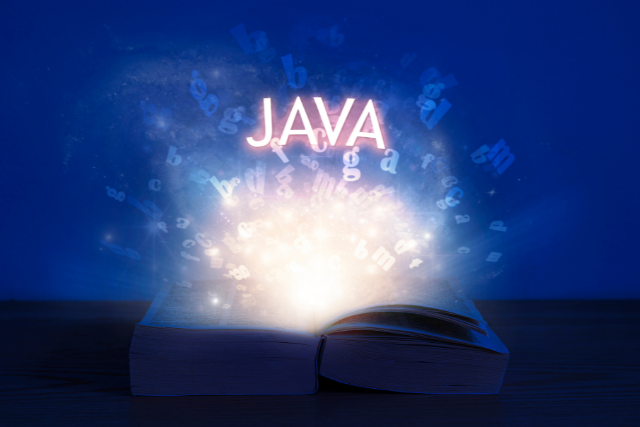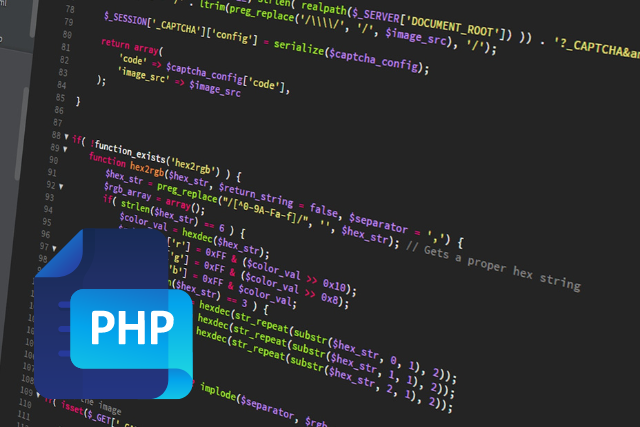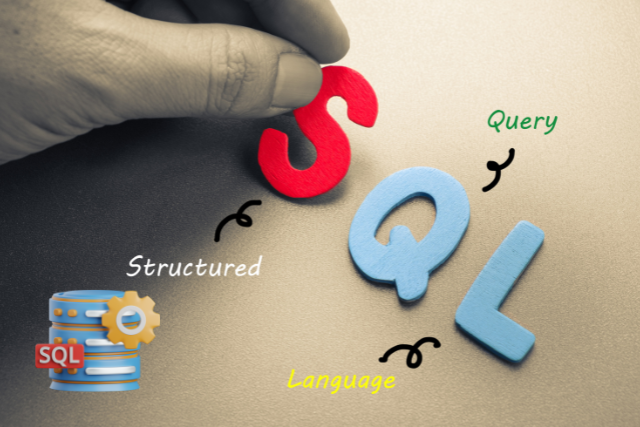Laravel, a powerful and elegant PHP framework, is widely used for building web applications due to its expressive syntax, comprehensive features, and developer-friendly environment.
When interviewing candidates for a position involving Laravel development, it’s crucial to assess their understanding of the framework’s core concepts, functionalities, and best practices.
Below, you’ll find a list of 40 targeted interview questions to help you evaluate the skills and knowledge of potential Laravel developers.
Importance of Laravel in Modern Web Development
Laravel is an open-source PHP framework that follows the Model-View-Controller (MVC) architectural pattern. Developed by Taylor Otwell, it aims to make the development process a pleasurable experience for developers without sacrificing application functionality.
Laravel provides a rich set of features, including routing, session management, authentication, and caching, simplifying the development of robust and scalable web applications.
One of the critical strengths of Laravel is its elegant syntax, which allows developers to write clean and readable code. Laravel’s Eloquent ORM (Object-Relational Mapping) makes it easy to interact with databases by abstracting complex SQL queries into simple PHP code. This helps developers manage and manipulate data with minimal effort and reduces the risk of errors.
Laravel also promotes modern web development practices such as dependency injection, unit testing, and RESTful API development. Its comprehensive documentation and vibrant community support ensure developers have access to extensive resources and assistance, making overcoming challenges and implementing best practices easier.
Furthermore, Laravel’s built-in tools, such as Artisan (a command-line interface) and Laravel Mix (an asset compilation tool), streamline everyday development tasks, boosting productivity and efficiency. The framework’s modular structure allows for easy integration with third-party packages, enabling developers to extend the functionality of their applications without reinventing the wheel.
Laravel is an essential framework for modern web development, providing a rich set of tools and features that facilitate the creation of high-quality, maintainable, and scalable web applications.
40 Most Common Interview Questions
1. What is Laravel, and what are its main features?
Answer:
Laravel is an open-source PHP framework for web application development following the MVC (Model-View-Controller) architectural pattern. Its main features include:
- Eloquent ORM for database interaction
- Blade templating engine
- Routing and Middleware
- Authentication and Authorization
- Artisan command-line tool
- Laravel Mix for asset compilation
- Task scheduling and queue management
2. Explain the MVC architecture pattern and how Laravel implements it.
Answer:
The MVC (Model-View-Controller) architecture pattern separates an application into three main components:
- Model: Manages data and business logic
- View: Handles the presentation layer
- Controller: Manages the flow of data between the Model and View
In Laravel, models are defined using Eloquent ORM, views are created using Blade templating engine, and controllers handle requests and return responses.
3. How do you install a new Laravel project?
Answer:
You can install a new Laravel project using Composer. Run the following command in your terminal:
composer create-project --prefer-dist laravel/laravel projectNameAlternatively, you can use Laravel Installer:
laravel new projectName4. What is Eloquent ORM and how does it work in Laravel?
Answer:
Eloquent ORM is Laravel’s built-in Object-Relational Mapping (ORM) tool that provides an easy and fluent way to interact with the database. Eloquent models correspond to database tables, and each model instance represents a row in that table. You can use Eloquent to perform CRUD operations, define relationships, and query the database using simple and intuitive syntax.
5. How do you define routes in Laravel?
Answer:
Routes in Laravel are defined in the routes/web.php file for web routes and routes/api.php file for API routes. Here is an example of defining a route:
Route::get('/users', [UserController::class, 'index']);6. Explain the purpose of middleware in Laravel.
Answer:
Middleware in Laravel acts as a bridge between a request and a response. It provides a convenient mechanism for filtering HTTP requests entering your application. Middleware can be used for tasks such as authentication, logging, and modifying request data. Middleware is defined in the app/Http/Middleware directory.
7. How do you create a new middleware in Laravel?
Answer:
You can create a new middleware using Artisan command:
php artisan make:middleware MiddlewareNameThen, register the middleware in the app/Http/Kernel.php file.
8. What is the purpose of the artisan command in Laravel?
Answer:
Artisan is the command-line interface included with Laravel. It provides various commands to help with common development tasks such as generating boilerplate code, running migrations, managing queues, and running tests. Artisan commands are executed using the php artisan command followed by the specific task.
9. How do you create a new controller in Laravel?
Answer:
You can create a new controller using the Artisan command:
php artisan make:controller ControllerName10. What are Laravel migrations and how do they work?
Answer:
Laravel migrations are version control for your database. They allow you to define and modify the structure of your database using PHP code instead of raw SQL. Migrations are typically stored in the database/migrations directory and are run using Artisan commands such as php artisan migrate.
11. How do you define relationships between models in Laravel?
Answer:
Relationships between models in Laravel are defined using Eloquent ORM. Common relationships include:
- One-to-One:
hasOneandbelongsTo - One-to-Many:
hasManyandbelongsTo - Many-to-Many:
belongsToMany
Here is an example of a one-to-many relationship:
class User extends Model {
public function posts() {
return $this->hasMany(Post::class);
}
}
class Post extends Model {
public function user() {
return $this->belongsTo(User::class);
}
}12. Explain the use of Blade templating engine in Laravel.
Answer:
Blade is Laravel’s powerful templating engine that allows you to create dynamic views with clean and readable syntax. Blade templates are compiled into plain PHP code and cached for better performance. Blade provides features such as template inheritance, sections, components, and control structures.
13. How do you pass data to views in Laravel?
Answer:
You can pass data to views in Laravel using the with method or by passing an array as the second argument to the view function. Here is an example:
return view('welcome')->with('name', 'John');Or:
$data = ['name' => 'John'];
return view('welcome', $data);14. What is CSRF protection and how does Laravel implement it?
Answer:
CSRF (Cross-Site Request Forgery) protection helps prevent malicious users from performing actions on behalf of authenticated users without their consent. Laravel implements CSRF protection by generating a CSRF token for each active user session, which must be included in forms and AJAX requests. Laravel’s Blade templates provide a @csrf directive to include the token in forms.
15. How do you use validation in Laravel?
Answer:
Validation in Laravel can be performed using the validate method or by creating a form request class. Here is an example using the validate method:
$request->validate([
'name' => 'required|max:255',
'email' => 'required|email',
]);16. Explain the purpose of service providers in Laravel.
Answer:
Service providers are the central place for configuring your application. They are responsible for bootstrapping all the framework’s various components. Laravel’s core services are all bootstrapped via service providers. Custom service providers can be created to register your application’s own services.
17. What is dependency injection and how does Laravel support it?
Answer:
Dependency injection is a design pattern where an object receives its dependencies from an external source rather than creating them itself. Laravel supports dependency injection through its service container, allowing you to type-hint dependencies in your controllers, services, and other classes.
18. How do you handle file uploads in Laravel?
Answer:
File uploads in Laravel can be handled using the store method on an uploaded file instance. Here is an example:
if ($request->hasFile('file')) {
$path = $request->file('file')->store('uploads');
}19. What is Laravel Mix and how is it used?
Answer:
Laravel Mix is a tool for defining Webpack build steps for your application’s assets. It provides a fluent API for compiling CSS and JavaScript files, as well as other preprocessing tasks. Laravel Mix is configured using the webpack.mix.js file.
20. How do you implement authentication in Laravel?
Answer:
Laravel provides a built-in authentication system, which can be implemented using the php artisan make:auth command (for older versions) or by using Laravel Jetstream or Laravel Breeze packages for newer versions. These tools generate all the necessary routes, views, and controllers for user authentication.
21. What is the purpose of the Gate facade in Laravel?
Answer:
The Gate facade in Laravel provides a simple way to authorize user actions. Gates are used to define authorization logic, allowing
or denying users from performing certain actions based on their roles or permissions.
22. How do you create API routes in Laravel?
Answer:
API routes in Laravel are defined in the routes/api.php file. These routes are typically prefixed with /api and are stateless. Here is an example:
Route::get('/users', [UserController::class, 'index']);23. Explain the use of Resource controllers in Laravel.
Answer:
Resource controllers in Laravel provide a way to handle CRUD operations for a resource. They are created using the php artisan make:controller --resource command and include methods for handling index, create, store, show, edit, update, and destroy actions.
24. How do you use the Query Builder in Laravel?
Answer:
The Query Builder in Laravel provides a fluent interface for constructing and executing database queries. Here is an example:
$users = DB::table('users')->where('active', 1)->get();25. What is the purpose of the Cache facade in Laravel?
Answer:
The Cache facade in Laravel provides a simple and unified interface for interacting with the cache system. It supports various cache drivers, including file, database, Redis, and more. The Cache facade can be used to store, retrieve, and delete cached data.
26. How do you implement task scheduling in Laravel?
Answer:
Task scheduling in Laravel is handled by the Scheduler, which allows you to define scheduled tasks in the app/Console/Kernel.php file. Here is an example:
$schedule->command('inspire')->hourly();27. Explain the use of queues in Laravel.
Answer:
Queues in Laravel allow you to defer the processing of time-consuming tasks, such as sending emails, until a later time. This improves the performance and responsiveness of your application. Queues are configured in the config/queue.php file, and jobs are created using the php artisan make:job JobName command.
28. How do you create custom validation rules in Laravel?
Answer:
Custom validation rules in Laravel can be created by extending the Illuminate\Validation\Validator class or by using Rule objects. Here is an example:
use Illuminate\Contracts\Validation\Rule;
class Uppercase implements Rule {
public function passes($attribute, $value) {
return strtoupper($value) === $value;
}
public function message() {
return 'The :attribute must be uppercase.';
}
}29. What is Laravel Echo and how is it used?
Answer:
Laravel Echo is a library that makes it easy to work with WebSockets in Laravel. It provides an expressive API for subscribing to channels and listening for events broadcasted by your application. Laravel Echo works with the Laravel broadcasting system and can be used with Pusher, Redis, and other WebSocket servers.
30. How do you use the Seeder class in Laravel?
Answer:
The Seeder class in Laravel is used to populate the database with initial data. Seeders are created using the php artisan make:seeder SeederName command and are executed using the php artisan db:seed command. Here is an example:
use Illuminate\Database\Seeder;
class UsersTableSeeder extends Seeder {
public function run() {
DB::table('users')->insert([
'name' => 'John Doe',
'email' => 'john.doe@example.com',
'password' => bcrypt('password'),
]);
}
}31. What are Laravel events and listeners?
Answer:
Events in Laravel are used to signal that an action has taken place, and listeners are used to handle those events. Events and listeners are created using Artisan commands and are defined in the EventServiceProvider. Here is an example of creating an event:
php artisan make:event EventNameAnd a listener:
php artisan make:listener ListenerName32. How do you implement localization in Laravel?
Answer:
Localization in Laravel is implemented using language files stored in the resources/lang directory. You can create different language files for each language your application supports and use the trans or __ helper functions to retrieve localized strings.
33. What is the purpose of the Observer class in Laravel?
Answer:
The Observer class in Laravel is used to listen to model events, such as creating, updating, deleting, and saving. Observers allow you to encapsulate event handling logic for a model. Observers are created using the php artisan make:observer ObserverName command and are registered in the model’s boot method.
34. How do you perform unit testing in Laravel?
Answer:
Unit testing in Laravel is done using PHPUnit, which is included with Laravel. You can create test cases using the php artisan make:test TestName command and run tests using the php artisan test command. Test methods should be prefixed with test.
35. Explain the use of policy classes in Laravel.
Answer:
Policy classes in Laravel are used to organize authorization logic around a particular model or resource. Policies are created using the php artisan make:policy PolicyName command and define methods corresponding to the actions they authorize. Policies are registered in the AuthServiceProvider.
36. How do you use Event Broadcasting in Laravel?
Answer:
Event broadcasting in Laravel allows you to broadcast server-side events to the client-side for real-time web applications. Broadcasting is configured in the config/broadcasting.php file, and events are broadcasted using the ShouldBroadcast interface. Here is an example:
use Illuminate\Contracts\Broadcasting\ShouldBroadcast;
class OrderShipped implements ShouldBroadcast {
public function broadcastOn() {
return ['orders'];
}
}37. How do you implement pagination in Laravel?
Answer:
Pagination in Laravel is implemented using the paginate method on Eloquent models or query builder instances. Here is an example:
$users = User::paginate(15);You can then display the pagination links in your view using the links method:
{{ $users->links() }}38. What is the purpose of Form Requests in Laravel?
Answer:
Form requests in Laravel are custom request classes that encapsulate validation logic. They are created using the php artisan make:request RequestName command and allow you to centralize validation logic for a particular form.
39. How do you implement Soft Deletes in Laravel?
Answer:
Soft deletes in Laravel allow you to “delete” models without removing them from the database. This is done using the SoftDeletes trait. Here is an example:
use Illuminate\Database\Eloquent\Model;
use Illuminate\Database\Eloquent\SoftDeletes;
class User extends Model {
use SoftDeletes;
}40. What are Laravel Collections and how do you use them?
Answer:
Laravel Collections are a wrapper for arrays that provide a fluent, convenient interface for working with data. Collections are typically returned by Eloquent queries. Here is an example:
$users = User::all();
$filtered = $users->filter(function ($user) {
return $user->isActive();
});Conclusion
Laravel continues to be a leading framework in PHP web development, known for its elegance, simplicity, and powerful features. Hiring a skilled Laravel developer ensures that your web applications are built using best practices, modern tools, and efficient workflows. By asking the right questions, you can identify candidates who possess the technical expertise and problem-solving abilities necessary to contribute effectively to your development team. Use these 40 questions to guide your interviews and ensure you select the best Laravel developers for your projects.







